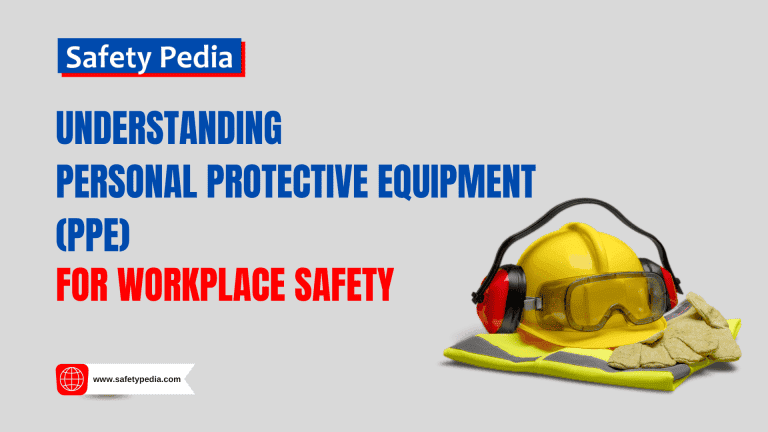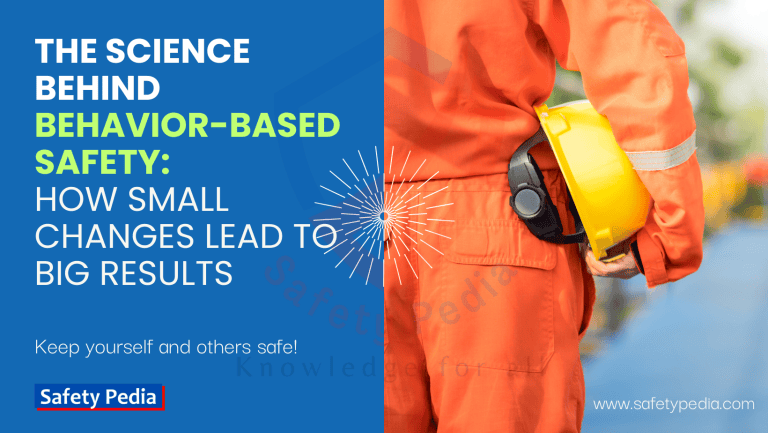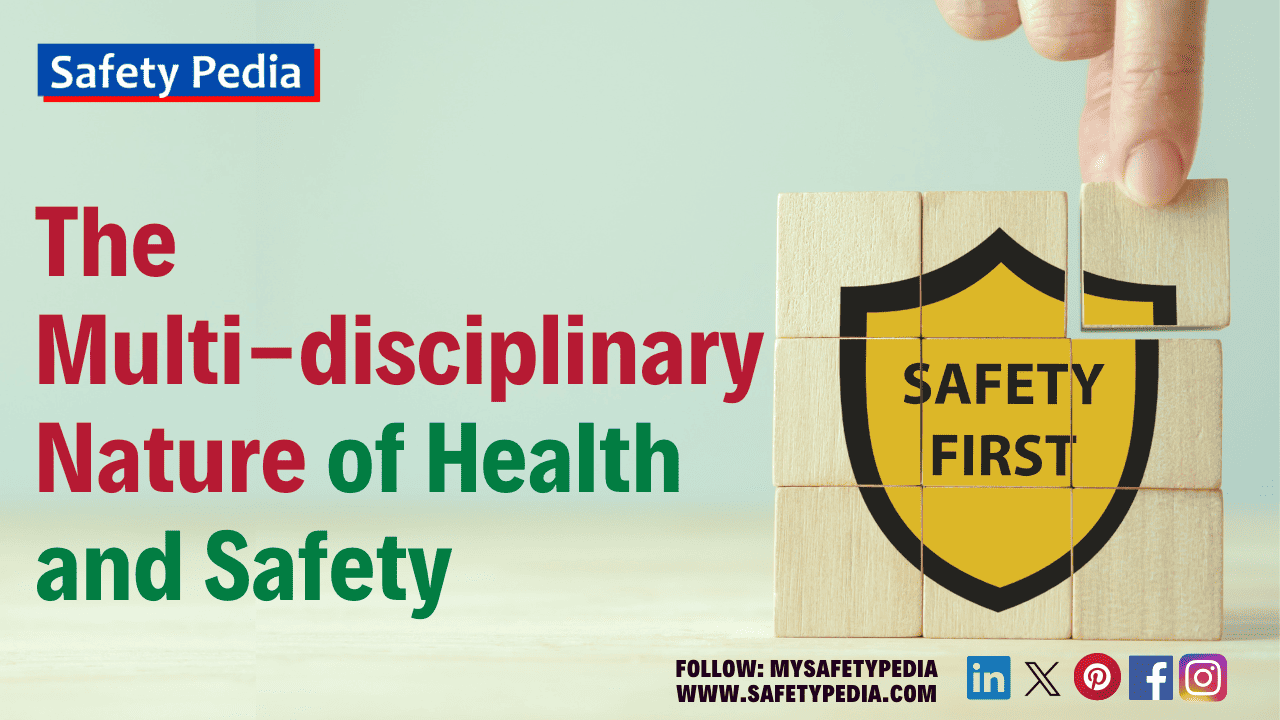
Introduction: The multi-disciplinary nature of health and safety
Health and safety is not just a matter of complying with rules and regulations. It is also a matter of understanding the complex interactions between human, technical, environmental, and organizational factors that affect the well-being of workers and the performance of organizations. In this article, we will explore the multi-disciplinary nature of health and safety, and how different disciplines can contribute to improving it. We will also discuss some of the challenges and opportunities for collaboration and integration among these disciplines.
Health and safety is a complex and multi-disciplinary field that encompasses a wide range of disciplines, including science, medicine, engineering, psychology, information technology, economics, sociology, and law. A multi-disciplinary approach to health and safety is essential for understanding and addressing complex health and safety issues, developing effective and comprehensive solutions, and improving public trust and confidence in health and safety.
In today’s world, we face a growing number of complex health and safety challenges. For example, the workplace is becoming increasingly complex and hazardous, and new technologies and products are emerging all the time. These challenges cannot be addressed effectively by any single discipline alone. A multi-disciplinary approach to health and safety is essential for bringing together the expertise and perspectives of different disciplines to develop and implement effective solutions.
What is health and safety?
Health and safety is a broad term that encompasses the protection of people from harm, both physically and mentally. Health and safety refers to a set of principles, guidelines, and practices designed to protect and promote the well-being of individuals in various environments. Whether in the workplace, at home, or in public spaces, the goal of health and safety measures is to prevent accidents, injuries, and illnesses.
However, health and safety is not a simple or straightforward topic. It requires the integration and collaboration of various disciplines that contribute to the identification, assessment, prevention, and management of occupational hazards and risks in the workplace and beyond.
What is the multi-disciplinary nature of health and safety?
The multi-disciplinary nature of health and safety refers to the fact that this field involves various disciplines and domains of knowledge, such as engineering, medicine, health care, psychology, law, management, economics, IT, Architecture and design, business, and culture and ethics.
The multi-disciplinary nature of health and safety also implies that professionals in this field need to collaborate and communicate effectively with different stakeholders, such as employers, employees, regulators, customers, and the public.
The multi-disciplinary nature of health and safety challenges the practitioners to adopt a holistic and systemic approach to identify, assess, and control hazards and risks in different contexts and scenarios.
The multi-disciplinary nature of health and safety requires continuous learning and updating of skills and knowledge to keep up with the changing technologies, regulations, standards, and best practices in this field.
Health and safety is a dynamic and evolving field that requires continuous learning and improvement. Health and safety professionals need to keep up with the latest developments in research, technology, legislation, and best practices. They also need to collaborate with various stakeholders, such as workers, managers, regulators, customers, suppliers, contractors, and the community. By doing so, they can ensure that health and safety is integrated into every aspect of their organization’s operations and culture.
Why is a multi-disciplinary approach to health and safety important?
A multi-disciplinary approach to health and safety is important because it allows for a comprehensive and holistic understanding of the various factors that affect the well-being of workers and the public. By integrating different perspectives, methods, and tools from different disciplines, such as engineering, psychology, medicine, law, information technology, and management, a multi-disciplinary approach can identify, assess, and mitigate the risks and hazards that may arise from complex and dynamic work environments.
A multi-disciplinary approach can also promote collaboration, communication, and learning among different stakeholders, such as employers, employees, regulators, customers, and suppliers, who have different roles and responsibilities in ensuring health and safety. A multi-disciplinary approach can thus enhance the effectiveness and efficiency of health and safety interventions, as well as the quality and sustainability of health and safety outcomes.
12 Benefits of a multi-disciplinary approach to health and safety
- A multi-disciplinary approach to health and safety involves collaboration and coordination among different professionals and stakeholders, such as managers, workers, regulators, researchers, auditors, educators, and consultants.
- It improves the understanding of complex health and safety issues, such as the interactions between human, environmental, and organizational factors that affect worker well-being.
- This approach can enhance the effectiveness and efficiency of health and safety interventions by drawing on diverse perspectives, expertise, and resources.
- It can develop a culture of continuous improvement, innovation, and creativity by generating new ideas, insights, and solutions from different perspectives, as different disciplines can share best practices, identify gaps, and propose solutions.
- It can facilitate the integration of health and safety into other organizational goals and strategies, as different disciplines can align their objectives and actions with the overall vision and mission.
- It can improve the quality and relevance of health and safety data and information, as different disciplines can contribute to data collection, analysis, interpretation, and dissemination.
- It can increase the awareness and engagement of various stakeholders in health and safety issues, as different disciplines can communicate and educate in different ways and channels.
- It can reduce the risks of conflicts, duplication, or fragmentation of health and safety efforts, as different disciplines can coordinate their roles and responsibilities and avoid working in silos.
- It can improve the communication and coordination among different actors involved in health and safety by establishing common goals, language, and standards.
- It provides a more comprehensive understanding of health and safety risks, such as the causes, effects, and prevention of occupational injuries and illnesses.
- It develops more effective and comprehensive solutions, such as new technologies, standards, policies, and practices that can reduce or eliminate health and safety hazards.
- It enhances public trust and confidence in health and safety, by demonstrating the commitment and responsibility of employers, workers, regulators, and researchers to protect and improve worker health and safety.
What are the disciplines involved in health and safety?
Occupational health and safety is a broad subject. The specific roles that people from different disciplines play in health and safety will vary depending on the organization and the industry. However, all disciplines can play a role in promoting health and safety. Some of the disciplines are listed below:
- Science & engineering (e.g., chemistry, physics, mathematics and statistics, biology, ergonomics)
- Engineering (e.g., electrical, mechanical, chemical, civil, human factors engineering, architecture and design)
- Medicine (e.g., occupational health, occupational medicine, industrial hygiene, toxicology, health care)
- Psychology (e.g., safety culture, behavioral safety, risk perception, human behavior, cognition, emotions, motivation, workplace stress)
- Sociology (e.g., organizational culture, education, culture and ethics studies, norms and values human factors, safety leadership)
- Information technology (e.g., software, data storage, data analysis, artificial intelligence (AI))
- Economics (e.g., financial resources, business, cost-benefit analysis)
- Law (e.g., health and safety legislation, regulations, standards)
- Management (e.g., planning, organizing, leading, and controlling resources and activities, communication, goals, objectives, strategies, policies, procedures, and standards for occupational safety and health)
Some of the disciplines and professions that contribute to occupational safety and health are:
Science and Health & Safety
Science is the foundation of health and safety, as it provides the theoretical and empirical basis for understanding the nature and effects of hazards, such as chemicals, motions, radiation, noise, vibration, heat, cold, etc. Science also helps to develop methods and tools for measuring, monitoring, and evaluating exposure levels and health outcomes.
Scientists can play a role in health and safety by conducting research on hazards, developing new technologies to prevent accidents, and assessing the risks associated with new products and processes. Some of the scientific disciplines that are relevant to health and safety include:
- Chemistry: The study of the composition, structure, properties, and reactions of matter. Chemistry helps to identify and characterize hazardous substances, such as gases, liquids, solids, aerosols, etc., and to determine their toxicity, flammability, corrosiveness, explosiveness, etc. Chemistry also helps to design and implement safe plant and machinery, production, safe handling, storage, transport, use, and disposal of chemicals.
- Biology: The study of living organisms and their interactions with each other and the environment. Biology helps to understand the effects of hazards on human health at different levels of organization (e.g., molecular, cellular, tissue, organ, system, organism). Biology also helps to identify biological hazards (e.g., bacteria, viruses, fungi, parasites, etc.) that can cause infections or diseases in humans or animals. It helps to understand the biological aspects of health and safety, such as human anatomy, physiology, pathology, immunology, microbiology, etc. Biology also helps to prevent and treat diseases and injuries, promote wellness and fitness, and protect biodiversity.
- Physics: The study of the nature and behavior of matter and energy. Physics helps to understand and control physical hazards, such as electricity, magnetism, force, momentum, radiation, light, sound, heat, etc. Physics also helps to develop and use instruments and devices for detecting, measuring, and shielding from physical hazards.
- Mathematics and statistics: The study of numbers, patterns, shapes, logic, and data. Mathematics and statistics help to quantify and analyze health and safety data, such as exposure levels, dose-response relationships, incidence rates, prevalence rates, mortality rates, etc. Mathematics and statistics also help to model and predict health and safety outcomes based on various factors and scenarios. It also helps in analyzing data to identify trends, patterns, and risks.
- Ergonomics: The study of human factors in relation to the design and use of products, systems, and environments. Ergonomics helps to optimize human performance, comfort, health, and safety by applying knowledge of human anatomy, physiology, psychology, and behavior to the design of work tasks, equipment, workstations, work environments, etc. Ergonomics also helps to prevent or reduce musculoskeletal disorders (MSDs), such as back pain, neck pain, and carpal tunnel syndrome, etc., that can result from poor posture, repetitive motions, excessive force, etc.
Engineering and Health & Safety
Engineering is the application of science, mathematics, and technology to solve practical problems. Engineering helps to design, build, operate, maintain, and improve products, systems, and structures that are safe, reliable, efficient, and sustainable.
Engineering is a cornerstone in safety management, encompassing the design and implementation of safety protocols. The collaboration between safety professionals and engineers ensures that structures and systems are built with safety in mind.
Engineers can design safe workplaces, and build, maintain, and improve machines, equipment, structures, systems, and processes that are used in different work settings. Engineers also apply scientific principles and methods to identify, assess, and control hazards and risks. Some of the engineering disciplines that are relevant to health and safety include:
- Electrical engineering: The branch of engineering that deals with electricity and its applications. Electrical engineering helps to ensure the safe and efficient generation, transmission, distribution, and use of electrical power and signals. Electrical engineering also helps to prevent or reduce electrical hazards (e.g., electric shock, arc flash, arc blast, fire, explosion, electromagnetic, interference, etc.) that can result from system failure, faulty wiring, overloading, short circuits, ground faults, malfunctioning, voltage variations, lightning strikes, etc.
- Mechanical engineering: The branch of engineering that deals with machines and their components. Mechanical engineering helps to design and manufacture machines (e.g., engines, pumps, turbines, compressors, furnaces, conveyors, etc.) that are safe and efficient for various purposes (e.g., manufacturing, power generation, transportation, etc.). Mechanical engineering also helps to prevent or reduce mechanical hazards (e.g., entanglement, crushing, cutting, pinching, etc.) that can result from moving parts loose clothing or hair lack of guards or shields, etc.
- Chemical engineering: The branch of engineering that deals with chemical processes and their applications. Chemical engineering helps to design and operate chemical plants (e.g., refineries, petrochemicals, fertilizer plants, pharmaceuticals, etc.) that are safe and efficient for producing various products (e.g., fuels, plastics, fertilizer, medicines, etc.). Chemical engineering also helps to prevent or reduce chemical hazards (e.g., fire, explosion, poisoning, corrosion, etc.) that can result from leaks spills reactions, etc.
- Civil engineering: The branch of engineering that deals with the design construction and maintenance of public works (e.g., buildings, roads, bridges, dams, etc.) that are safe and functional for various purposes (e.g., factories, transportation, communication, water supply, etc.). Civil engineering also helps to prevent or reduce structural hazards (e.g., collapse, failure, cracking, etc.) that can result from natural or human-made disasters (e.g., earthquakes, floods, landslides, terrorism, etc.).
- Human factors engineering: The branch of engineering that deals with the interaction between humans and systems. Human factors engineering helps to design systems (e.g., product interfaces display controls, etc.) that are compatible with human capabilities limitations, and needs. It focuses on designing systems that consider human capabilities and limitations. Human factors engineering also helps to prevent or reduce human errors (e.g., slips, lapses, mistakes, violations, etc.) that can result from poor design usability or training.
These are the physical psychological characteristics of humans that affect their interaction with machines systems in the workplace.
Medicine and Health & Safety
Medicine is the science and practice of diagnosing treating and preventing diseases and injuries. Medicine helps to protect and promote human health and well-being by applying knowledge of human biology, pathology, pharmacology, epidemiology, etc.
Medical professionals diagnose, treat, and prevent diseases and injuries that affect workers and the public. They also provide health education, counseling, and rehabilitation services to workers and their families. Some of the medical disciplines that are relevant to health and safety include:
- Occupational health: The branch of medicine that deals with the prevention and management of work-related diseases and injuries. Occupational health helps to assess the health status of workers by conducting medical examinations, tests, screenings, etc. Occupational health also helps to provide medical care and rehabilitation for workers who suffer from work-related diseases or injuries. It addresses health issues related to the workplace, conducting medical surveillance, and managing occupational diseases.
- Occupational medicine: The branch of medicine that deals with the diagnosis and treatment of work-related diseases and injuries. Occupational medicine helps to identify and treat the causes and effects of work-related diseases and injuries by using various methods such as drugs, surgery, physiotherapy, etc. Occupational medicine also helps to certify the fitness or disability of workers for work or compensation purposes.
- Industrial hygiene: The branch of medicine that deals with the anticipation, recognition, evaluation, and control of environmental factors that may affect the health or well-being of workers or the community. Industrial hygiene helps to identify and measure potential hazards such as chemical, physical, biological, ergonomic, psychosocial, etc. in the workplace or the environment. Industrial hygiene also helps to implement preventive measures such as ventilation, filtration, personal protective equipment, etc. to reduce exposure levels and health risks.
- Toxicology: The branch of medicine that deals with the adverse effects of chemicals on living organisms. Toxicology helps to determine the toxicity or harmfulness of chemicals by conducting laboratory experiments, animal studies, human studies, in-vitro & in-vivo studies, etc. Toxicology also helps to establish exposure limits, safety standards, risk assessments, etc. based on toxicological data.
- Health care: The branch of medicine that deals with the provision of health services to individuals or groups. Health care helps to improve the quality of life of people by offering various services such as prevention, diagnosis, treatment, recovery, palliation, etc. Health care also helps to prevent or reduce the spread of infectious diseases (e.g., COVID-19, flu, tuberculosis, adenoviral conjunctivitis, dengue, etc.) by implementing public health measures such as vaccination, isolation, quarantine, contact tracing, etc.
Psychology and Health & Safety
Psychology is the scientific study of the human mind and behavior. Psychology can help OHS practitioners understand how workers perceive, process, and react to information, stimuli, and stressors in the workplace. Psychology helps to understand and influence human thoughts, feelings, actions, and interactions by applying knowledge of cognitive, affective, social, developmental, personality, etc.
Psychologists can help to understand and address the human factors that contribute to accidents. They can also develop training programs to promote safe behavior. Psychologists study human behavior, cognition, emotions, and motivation in relation to work and organizational factors. They also design, implement, and evaluate interventions to enhance worker well-being, safety, performance, and satisfaction. Some of the psychological disciplines that are relevant to health and safety include:
- Cognition: This refers to the mental processes involved in acquiring, storing, manipulating, and using information. Cognition affects how workers learn, remember, solve problems, and make decisions in the workplace. OHS practitioners can use cognitive psychology to design training programs, procedures, instructions, and feedback systems that are effective and user-friendly.
- Emotions: These are complex psychological states that involve physiological, behavioral, and cognitive components. Emotions influence how workers feel, express, and regulate their moods and attitudes in the workplace. OHS practitioners can use emotional psychology and emotional intelligence to assess and manage workers’ emotional well-being, satisfaction, and engagement. They can also use it to promote a positive organizational climate and culture that supports workers’ psychological health and safety.
- Motivation: This is the force that drives workers to perform certain actions or behaviors in the workplace. Motivation can be intrinsic (coming from within the worker) or extrinsic (coming from external rewards or punishments). OHS practitioners can use motivational psychology to understand what motivates workers to comply with OHS rules and standards, to participate in OHS programs and activities, and to improve their OHS performance. They can also use it to design incentive systems that are fair, transparent, and effective.
- Workplace stress: This is a psychological state that occurs when workers perceive a mismatch between the demands of their work environment and their ability or resources to cope with them. Workplace stress can have negative effects on workers’ physical and mental health, as well as on their OHS performance and behavior. OHS practitioners can use stress psychology to identify and reduce the sources of stress in the workplace, such as workload, role conflict, role ambiguity, lack of control, lack of support, etc. They can also use it to help workers develop coping strategies and resilience skills to deal with stress.
- Safety culture: The branch of psychology that deals with the shared values, beliefs, attitudes, and norms that influence how people perceive, think about, and behave in relation to safety. Safety culture helps to create a positive and proactive environment where safety is a priority, responsibility, and commitment for everyone. Safety culture also helps to prevent or reduce unsafe behaviors (e.g., complacency, negligence, recklessness, etc.) that can lead to accidents or incidents.
- Behavioral safety: The branch of psychology that deals with the application of behavior modification techniques to improve safety performance. Behavioral safety helps to reinforce safe behaviors (e.g., wearing personal protective equipment, following procedures, reporting hazards, etc.) by providing feedback, rewards, recognition, etc. Behavioral safety also helps to discourage unsafe behaviors (e.g., taking shortcuts, ignoring warnings, violating rules, etc.) by providing consequences, penalties, sanctions, etc.
- Risk perception: The branch of psychology that deals with how people judge the likelihood and severity of potential threats or losses. Risk perception helps to explain why people may underestimate or overestimate the risks associated with certain hazards or activities. Risk perception also helps to influence how people respond to risks by taking preventive actions, avoiding exposure, seeking information, etc.
- Human behavior: The branch of psychology that deals with how people act in different situations and contexts. Human behavior helps to understand the factors that motivate or deter people from behaving in certain ways (e.g., needs, wants, goals, values, beliefs, attitudes, emotions, personality, etc.). Human behavior also helps to predict how people will react to different stimuli (e.g., rewards, punishments, incentives, disincentives, etc.) or events (e.g., accidents, incidents, emergencies, crises, etc.).
Sociology and Health & Safety
This is the scientific study of human society, social groups, and social interactions. Sociology can help OHS practitioners understand how workers’ social context influences their OHS attitudes, beliefs, norms, and values. It can also help them understand how organizational factors affect workers’ OHS behavior and outcomes.
Sociologists can study the social and cultural factors that influence health and safety. They can also develop interventions to improve health and safety outcomes at the community level. Some topics that are relevant to OHS include:
- Organizational culture: This is the shared set of assumptions, values, beliefs, and norms that shape how members of an organization think, feel, and act. Organizational culture affects how workers perceive and interpret OHS issues, how they communicate and cooperate with each other, how they respond to change and innovation, etc. OHS practitioners can use organizational sociology to assess and improve the organizational culture of an organization to make it more conducive to OHS excellence.
- Education: Educators develop, deliver, and evaluate curricula and programs that aim to raise awareness and knowledge about occupational safety and health among workers, employers, students, and the general public. They also conduct research and disseminate information on occupational safety and health issues.
This is the process of facilitating learning or acquiring knowledge, skills, and competencies. Education can help OHS practitioners enhance workers’ OHS awareness, knowledge, and skills through formal or informal training programs, workshops, seminars, courses, etc. It can also help them promote a culture of continuous learning and improvement in OHS practices.
- Culture and ethics studies: These are interdisciplinary fields that examine the diversity of human cultures and ethical systems across time and space. Cultural and ethics studies can help OHS practitioners understand how workers’ cultural background, values, beliefs preferences influence their OHS behavior and expectations. It can also help them respect diversity and accommodate different needs and perspectives in OHS policies and practices.
- Norms & values: These are the unwritten rules and standards that guide and regulate human behavior in social situations. Norm values affect how workers judge what is right wrong acceptable unacceptable in OHS matters. OHS practitioners can use social psychology to identify and influence the norms and values that shape workers’ OHS behavior compliance.
- Safety leadership: This is the process of influencing others to achieve shared OHS goals objectives through communication motivation empowerment. Safety leadership can help OHS practitioners promote a positive safety climate culture in the organization that encourages workers to take ownership responsibility for OHS issues to actively participate in OHS improvement initiatives.
Information technology (IT) and Health & Safety
IT is the use of computers, software, data and networks to create, store, process and communicate information. IT can help OHS in many ways, such as:
- Software: OHS professionals can use software applications to design, implement, monitor and evaluate OHS programs, systems and interventions. For example, software can help with risk assessment, incident reporting, training, auditing and compliance.
- Data storage: OHS professionals can store large amounts of data related to OHS performance, incidents, hazards, risks, controls and outcomes. Data storage can help with data security, backup, retrieval and analysis.
- Data analysis: OHS professionals can use data analysis techniques to identify patterns, trends, correlations and causations in OHS data. Data analysis can help with decision making, problem solving, improvement and innovation.
- Artificial intelligence (AI): AI is the simulation of human intelligence by machines. AI can help OHS in many ways, such as:
- Predictive analytics: AI can use data to predict future outcomes and events related to OHS. For example, AI can help with forecasting risks, hazards and incidents, and suggesting preventive actions.Machine learning: AI can learn from data and experience without explicit programming. Machine learning can help with adapting and improving OHS systems and interventions based on feedback and results.
- Natural language processing: AI can understand and generate natural language texts and speech. Natural language processing can help with communicating and interacting with OHS stakeholders, such as workers, managers, customers and regulators.
Economics and Health & Safety
Economics is the study of how people allocate scarce resources to satisfy their wants and needs. Economics is the discipline that studies the production, distribution, and consumption of goods and services in a society. Economics helps us understand the costs and benefits of health and safety interventions for workers, employers, customers, or society at large. Economics can help OHS in many ways, such as:
- Cost-benefit analysis: OHS professionals can use cost-benefit analysis to compare the costs and benefits of different OHS options and alternatives. Cost-benefit analysis can help with selecting the most efficient and effective OHS solutions.
- Business: OHS professionals can use business principles and practices to manage OHS operations and projects. Businesses can help with aligning OHS goals with organizational goals, maximizing OHS value and return on investment, and ensuring OHS sustainability and competitiveness.
- Financial resources: OHS professionals can use financial resources to fund OHS activities and initiatives. Financial resources can help with acquiring equipment, materials, technology and services for OHS purposes.
Law and Health & Safety
Law is the system of rules and regulations that governs the behavior of individuals and groups in society. Law helps us ensure the compliance and accountability of health and safety activities for workers, employers, regulators, or other stakeholders.
Legal professionals deal with the legal aspects of occupational safety and health, such as regulations, standards, policies, contracts, liability, compensation, and litigation. They also advise and represent workers, employers, unions, government agencies, and other stakeholders in occupational safety and health matters. Law can help OHS in many ways, such as:
- Health and safety legislation: OHS professionals can use health and safety legislation to define the rights and responsibilities of employers, workers and other parties in relation to OHS. Health and safety legislation can help with establishing the legal framework and standards for OHS practice.
- Regulations: OHS professionals can use regulations to specify the detailed requirements and procedures for complying with health and safety legislation. Regulations can help with clarifying the expectations and obligations for OHS performance.
- Standards: OHS professionals can use standards to provide guidance and best practices for achieving excellence in OHS. Standards can help with improving the quality and consistency of OHS outcomes. Organization can adopt the voluntary guidelines that provide best practices for OHS management systems, processes, or outcomes, such as ISO 45001
Management and Health & Safety
Management is the process of planning, organizing, leading and controlling the resources and activities of an organization to achieve its goals and objectives. Management also plays a key role in communication, coordination, and collaboration among different stakeholders, such as workers, employers, regulators, customers, and suppliers. It helps us coordinate the efforts of workers and organizations towards OHS excellence.
Managers plan, organize, direct, and control the resources and activities of an organization or a project related to occupational safety and health. They also establish goals, objectives, strategies, policies, procedures, and standards for occupational safety and health performance and compliance. For example, management can help us:
- Planning: define the OHS vision, mission, and strategy of an organization, and set the OHS goals, objectives, and targets to be achieved. Strategies are the plans or methods that a management process uses to achieve its goals and objectives. OHS professionals must know how to formulate safety strategies. Strategies can be formulated at different levels such as corporate, business, or functional, and they can involve various aspects such as marketing, finance, operations, human resources, etc.
- Organizing: allocate the OHS roles, responsibilities, and resources among workers and organizations, and establish the OHS policies, procedures, and standards to be followed.
- Leading: inspire the OHS commitment, engagement, and participation of workers and organizations, and promote the OHS culture, climate, and values to be shared.
- Controlling: monitor the OHS performance, results, and outcomes of workers and organizations, and evaluate the OHS effectiveness, efficiency, and improvement to be made.
- Policies, procedures, and standards: Policies, procedures, and standards for occupational safety and health are the rules, guidelines, and expectations that a management process sets and follows to ensure the well-being and protection of its workers and other stakeholders from hazards and risks in the workplace.
- Communication: Communication is the exchange of information, ideas, feedback, and instructions among different parties involved in a management process. OHS professional must have Communication skills to obtain excellence in health and safety.
Challenges of a multi-disciplinary approach to health and safety
- Communication: Communicating effectively across different disciplines can be challenging, due to different terminology, jargon, perspectives, and cultures
- Collaboration: It can be difficult to get people from different disciplines to work together effectively, especially if they have different competing priorities.
- Resources: Implementing a multi-disciplinary approach to health and safety can require significant resources, such as time, money, and personnel.
- Conflicting goals and priorities: Conflicting goals and priorities among different disciplines and stakeholders. This can lead to misunderstandings, disagreements and delays in decision making and problem solving.
- Lack of trust and respect among team members: This can affect the quality of communication, feedback and cooperation, and create a negative work environment.
- Ethical issues: Ethical dilemmas and legal issues arising from complex and uncertain situations. This can pose challenges to the professional integrity, responsibility and accountability of team members, and expose them to potential risks and liabilities.
How can we overcome these challenges?
Some of the strategies that can facilitate a multi-disciplinary approach are:
- Establishing a clear vision, mission and objectives for health and safety that are shared by all disciplines.
- Creating a supportive environment that encourages mutual respect, trust and cooperation among different disciplines.
- Forming teams that include members from various disciplines promotes synergy and diversity of thought. These cross-disciplinary teams can collaborate on specific projects, leveraging the strengths of each discipline.
- Developing a common framework that defines the roles, responsibilities, expectations and deliverables of each discipline.
- Providing adequate resources, training and incentives for multi-disciplinary collaboration.
- Implementing regular feedback mechanisms that monitor the progress, performance and impact of a multi-disciplinary approach.
- Offering training programs that expose professionals to the fundamentals of other disciplines cultivates a more well-rounded understanding of health and safety challenges.
- Encouraging and funding research and projects that require collaboration between different disciplines can be instrumental.
- Recognizing and rewarding collaborative efforts can serve as a powerful incentive. Acknowledging individuals and teams for successful interdisciplinary projects reinforces the importance of working together.
Integrating health and safety in diverse industries
The application of health and safety is not limited to specific industries. It is a universal concern that transcends sectors, from manufacturing to technology. A multi-disciplinary approach ensures that safety measures are tailored to the unique challenges of each industry.
Few Examples of how different disciplines collaborate to improve health and safety
- Designing safe workplaces and equipment: Engineers and scientists work together to design workplaces and equipment that are safe to use and minimize the risk of accidents and injuries.
- Preventing occupational diseases: Occupational hygienists, toxicologists, and physicians work together to identify and assess occupational hazards to workers’ health, and to develop and implement prevention strategies.
- Promoting safety culture: Psychologists and safety professionals work together to promote a positive safety culture in organizations, where everyone is committed to working safely and preventing accidents.
- Responding to accidents and emergencies: Physicians, nurses, paramedics, and other emergency personnel work together to respond to accidents and emergencies, and to provide medical care to injured workers.
Safety Professional and Multi-disciplinary approach to health and safety
Safety professionals play a central role in implementing a multi-disciplinary approach. Their knowledge and expertise in various disciplines enable them to navigate the complexities of safety management effectively.
Multidisciplinary Aspects of Safety
Safety professionals must possess a diverse range of skills and knowledge in order to effectively address the multidisciplinary aspects of their field. This includes expertise in engineering, science, law, finance, budgeting, health, physics, mathematics, statistics, security, chemistry, biology, and the art of communication. Furthermore, safety professionals must also have an understanding of interdisciplinary approaches, as the integration of different disciplines allows for a holistic understanding of complex problems and issues. This interdisciplinary educational approach is essential for safety professionals as it helps them develop a comprehensive understanding of the complexities and contexts they may encounter in their work.
Developing a safety culture requires effective communication, coordination, cooperation and the development of educational interventions involving the multidisciplinary team. The interdisciplinary approach in safety professions promotes not only the development of critical thinking skills and improved attitudes toward learning, but also the ability to analyze and solve complex
Building a Robust Health and Safety Team Across Disciplines
Health and safety is a vital aspect of any organization, especially in sectors that involve high-risk activities or environments. However, health and safety is not just a matter of technical expertise or compliance. It also requires a holistic and multidisciplinary approach that considers the human, social, ethical, and organizational factors that affect the well-being of workers and the performance of the system.
In the dynamic field of health and safety, the multidisciplinary nature of the field opens its doors wide, welcoming professionals from nearly every discipline. The inclusivity of a health and safety team is not just a mere possibility but a strategic advantage that leverages diverse expertise for a more comprehensive approach to safeguarding well-being.
Consider this: health and safety involves an intricate web of challenges, from legal and financial considerations to the intricacies of physics, math, engineering, and the sciences. Professionals with backgrounds in law contribute to the development and implementation of robust safety regulations. Financial experts ensure that the necessary resources are allocated to sustain these safety measures effectively.
The disciplines of physics and math provide the analytical foundation for risk assessment, enabling precise modeling of potential hazards. Engineers bring their design and implementation skills to the table, crafting tangible safety protocols that stand up to real-world challenges. Meanwhile, the knowledge of chemistry and biology is indispensable for understanding and mitigating hazards that may pose risks to health and safety.
That is why health and safety teams can benefit from having diverse and complementary backgrounds, skills, and perspectives. By bringing together people from different disciplines, such as engineering, psychology, medicine, law, management, and education, health and safety teams can promote a culture of learning, collaboration, and innovation. They can also address complex and dynamic challenges with more creativity and effectiveness.
This multifaceted environment is not restrictive; it is accommodating. It acknowledges that every discipline has a unique perspective to offer, a set of skills that can contribute to the overarching goal of creating safer environments. A health and safety team, when composed of individuals from diverse disciplines, becomes a powerhouse of innovation, adaptability, and resilience.
Moreover, the future of health and safety is evolving in tandem with advancements in technology, particularly artificial intelligence (AI). The integration of AI in health and safety strategies further broadens the spectrum of skills required. This means that individuals with backgrounds in IT, data science, and other technology-related fields are increasingly valuable contributors to the health and safety narrative.
In essence, the multidisciplinary nature of health and safety invites professionals from all walks of expertise to join forces. It’s a call to action, urging individuals from diverse disciplines to bring their unique insights to the table, enriching the collective knowledge pool, and reinforcing the notion that safety is a shared responsibility.
So, whether you’re a legal eagle, a number cruncher, a tech whiz, or a scientist, there’s a place for you in the health and safety team. Grab the opportunity to contribute to a safer, healthier future, where the amalgamation of varied skills creates a tapestry of protection that transcends disciplinary boundaries. Join safetypedia in shaping a safer world for all.
The health and safety team isn’t just multidisciplinary; it’s a mosaic of expertise, and your piece is a vital part of the picture.
Knowledge Requirements for Safety Professionals
To excel in a multi-disciplinary environment, safety professionals need a diverse skill set. This includes a deep understanding of legal and financial aspects, proficiency in physics and math, and knowledge of engineering, chemistry, and biology.
By working together, professionals from different disciplines can develop more comprehensive and effective solutions to health and safety problems.
How can these disciplines work together to improve health and safety?
Each discipline has its own perspective, methods, tools, and techniques to address health and safety issues. However, no single discipline can provide a complete solution to the complex problems that arise in the real world. Therefore, it is important to encourage collaboration and integration among these disciplines to achieve a holistic approach to health and safety.
Collaboration is key. Establishing cross-disciplinary teams, encouraging open communication channels, and promoting continuous learning can enhance the synergy between different disciplines, leading to more effective health and safety strategies.
How Multidisciplinary Teams Enhance Safety Performance in Large Organizations
One of the best practices for ensuring safety in any organization is to create multidisciplinary teams that can collaborate and communicate effectively. Multidisciplinary teams are composed of members from different backgrounds, disciplines, and perspectives, who bring diverse skills and knowledge to the table. By working together, multidisciplinary teams can identify and address potential risks, hazards, and opportunities for improvement in a holistic and comprehensive way.
Multidisciplinary teams can also promote a culture of safety by promoting mutual respect, trust, and learning among team members. They can encourage each other to follow safety protocols, report incidents and near misses, and share best practices and lessons learned. They can also provide feedback and support to each other, and hold each other accountable for safety performance.
Large organizations, with their expansive operations and diverse risk landscapes, face a multitude of safety considerations. From intricate legal and financial compliance to the intricate interplay of physics, engineering, and biological factors, the challenges are multifaceted. It’s in the amalgamation of these disciplines that the true strength of a multidisciplinary team becomes apparent.
Moreover, in the context of large organizations, the sheer scale of operations necessitates a multifaceted approach. No single discipline can fully encapsulate the spectrum of safety challenges that arise in large and diverse organizational settings. A team that encompasses a variety of expertise becomes a powerhouse, capable of addressing challenges at every level, from the intricacies of daily operations to strategic, organization-wide safety planning.
However, creating and managing multidisciplinary teams is not an easy task. It requires careful planning, coordination, and leadership to ensure that the team members are aligned on the goals, roles, and expectations of the team. It also requires regular communication, collaboration, and evaluation to ensure that the team is functioning effectively and efficiently.
Multidisciplinary occupational health and safety teams are not only beneficial for safety, but also for innovation, quality, productivity, and customer satisfaction. They can help the organization adapt to changing environments, solve complex problems, and create value for all stakeholders.
No matter what their discipline, everyone has a role to play in promoting health and safety. By working together, we can create a safer and healthier world for everyone.
The multi-disciplinary approach and training in health and safety
Training programs should reflect the multi-disciplinary nature of health and safety. Integrating content from various disciplines ensures that professionals are well-equipped to address the complexities of safety management in their respective fields.
Training to health and safety professionals is essential for ensuring the well-being of workers and the public in various sectors and environments. By integrating knowledge and skills from different disciplines, such as engineering, medicine, psychology, law, and management, health and safety professionals can address complex and dynamic challenges that arise from human interactions with machines, systems, and processes. Training can help health and safety professionals to update their competencies, learn new methods and tools, and share best practices with their peers. The multi-disciplinary approach and training can also encourage collaboration, innovation, and continuous improvement in the field of health and safety.
By combining a multi-disciplinary approach with comprehensive training, health and safety professionals are better equipped to address the diverse challenges in the workplace. This approach encourages a collaborative mindset, ensuring that expertise from various domains contributes to creating and maintaining a safe and healthy work environment.
Importance of Effective Communication in Safety Careers
Effective communication is utmost in safety careers. Professionals must convey complex information across disciplines, ensuring that everyone involved understands the importance of safety measures and their role in maintaining a secure environment.
The multidisciplinary approach in the field of safety professions is crucial for success. Safety professionals need to have knowledge and skills in various disciplines such as engineering, science, law, finance, budgeting, health, physics, mathematics, statistics, security, chemistry, biology, and the art of communication. This interdisciplinary approach allows them to tackle complex problems, understand different professional values and best practices, and develop a well-rounded set of core competencies. In addition to technical knowledge in their respective fields, safety professionals should also have a strong understanding of interdisciplinary approaches. By drawing from different disciplines, safety professionals can bring a diverse range of expertise to their work, enabling them to effectively address intersectionality challenges within complex healthcare systems and promote patient safety.
The interdisciplinary approach in safety professions also emphasizes the importance of teamwork. Safety professionals should possess the ability to collaborate effectively with diverse teams, as this allows for the completion of ambitious yet focused safety projects. This collaborative approach brings together complementary knowledge and approaches, allowing interdisciplinary teams to address complex safety issues in a transparent and non-judgmental manner. Furthermore, teamwork is crucial for quality assurance and continuous improvement in patient safety.
This is not done in isolation; it requires effective communication, coordination, and cooperation among the multidisciplinary team. Safety professionals should possess excellent communication skills to effectively convey information, risks, and recommendations to various stakeholders including colleagues, management, and the general public. Effective communication is essential for safety professionals to convey complex information, risks, and recommendations to various stakeholders.
This includes the ability to explain technical concepts in a clear and understandable manner, actively listen to the concerns and feedback of others, and adapt their communication style to suit different audiences. Safety professionals must also have a strong foundation in safety management knowledge and professional skills. They must be able to effectively assess and manage risks, develop safety protocols and procedures, conduct audits and inspections, and analyze data to identify trends and areas for improvement.
The outline could be further expanded to include more specific examples of the multi-disciplinary nature of health and safety in practice. For example, the section on workplace safety could include examples of how engineers, occupational hygienists, ergonomists, and behavioral scientists work together to prevent workplace injuries and illnesses.
Conclusion:
In conclusion, a multi-disciplinary approach to health and safety is essential for understanding and addressing complex health and safety issues, developing effective and comprehensive solutions, and improving public trust and confidence in health and safety. Health and safety is a multi-disciplinary field that requires the integration of different types of knowledge, skills, and expertise. By working together across disciplines, we can achieve better outcomes for workers, organizations, and society.
Health and safety is a complex and dynamic field that requires the collaboration and integration of different disciplines, such as engineering, psychology, medicine, law, and management. Health and safety professionals need to have a broad range of skills and knowledge to address the various challenges and risks that arise in different work environments and contexts. By adopting a multi-disciplinary approach, health and safety practitioners can enhance their effectiveness and efficiency in preventing injuries and illnesses, promoting well-being and productivity, and ensuring compliance with relevant standards and regulations.
References:
(PDF) Managing Occupational Health and Safety: A Multidisciplinary Approach (researchgate.net)
Your one click can make a difference
Keep sharing and promoting health and safety awareness!
Related posts:

Understanding Leading and Lagging Indicators in Safety: A Comprehensive Guide
Gain a thorough understanding of the difference between leading and lagging indicators in safety and how they can help create a safer work environment. Learn how to implement these indicators effectively and ensure the well-being of your employees.
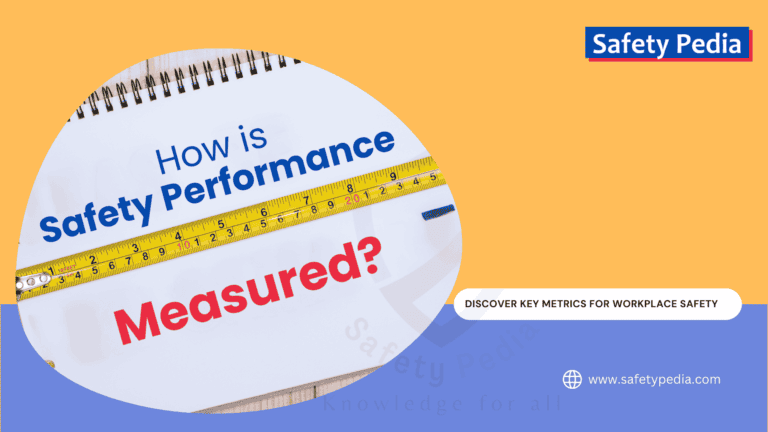
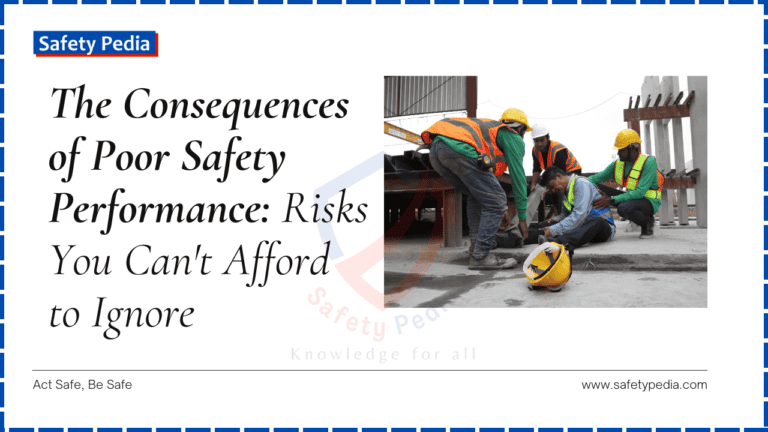
The Consequences of Poor Safety Performance: Risks You Can’t Afford to Ignore
Discover the potential consequences of poor safety performance in the workplace and how they can negatively impact both employees and the company as a whole.
Join Our Safety Community!
Stay informed with the latest tips and insights on occupational health, safety, and the environment.
